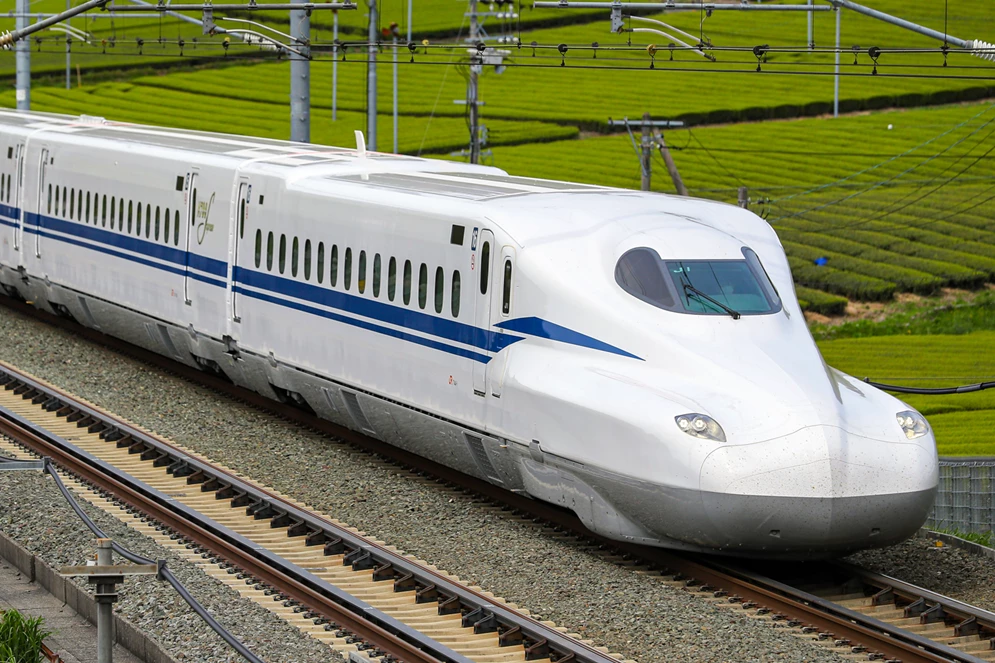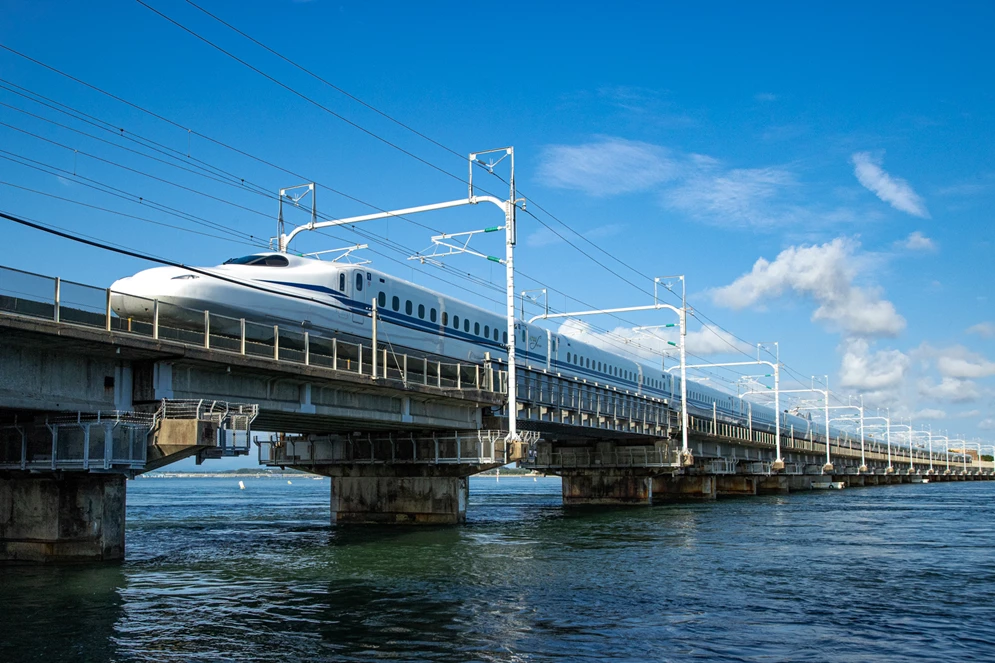The Shinkansen is a trusted and worldwide symbol of Japan’s technological advancement. These vehicles, also known as “bullet trains”, serve as a swift and efficient mode of transport. Shinkansen trains form a network across Japan’s high-speed railways, linking the most important cities of the country.
Many tourists visiting Japan are eager to ride the Shinkansen trains, which can reach peak speeds of over 320 kilometres per hour, although most regular trains do not exceed 300 km/h. However, they may not be fully aware of the extensive efforts and resources that have been invested to make this extraordinary high-speed transportation system a reality.
The bullet train system of today has been more than fifty years in the making. It is also one of the safest modes of transport, with a record of zero fatal accidents throughout its extensive history - a rare achievement among global transit systems.

The N700S Series
The evolution of Shinkansen rolling stock has been development in recent years, overcoming technical hurdles with the scope of reducing weight and increasing energy efficiency, both crucial for high-speed operation. Challenges associated with higher speeds include reducing internal and external noise and vibration during operation, making trains more energy-efficient, compact, lightweight, and maintenance-friendly. These technologies add important features to the Shinkansen trains used for long-distance travel in Japan, with notable improvement in punctuality, comfort, and convenience. Among the most recent innovations for the Shinkansen there are technologies for reliable high-speed operation, including aerodynamic optimization of the leading shape, vehicle noise reduction, energy-efficient traction systems, and enhancements in ride comfort.
Since July 2020, the N700S, the first model full change in 13 years, has started commercial operation. Developed by Central Japan Railway Company (JR Central) – as the previous N700 –the trains focus on passenger safety and comfort, and are equipped with constant speed control systems, vibration detection systems and new braking systems.
It is a vehicle that comes with a range of improvements, equipped with the highest performance in all aspects, including safety, stability, comfort, and environmental performance. This Shinkansen train is the world’s first high-speed railway vehicle equipped with a battery self-propulsion system and realises a “standard vehicle” that can flexibly configure the number of train cars due to miniaturisation and weight reduction of the underfloor equipment. This is the “best Shinkansen” that can provide an unprecedented high-quality ride and even more comfortable space for passengers and luggage areas such as rolling stock design, including improvements to the energy efficiency of the traction systems used on the Shinkansen.

The energy efficiency of the traction system was improved by adopting a higher-capacity drive circuit together with the use of Silicon Carbide (SiC) devices and highly efficient induction motors (IMs). The capacity of the traction system is enough to drive the 300-KW main motors needed to achieve the maximum speed of Shinkansen.
The power consumption of the N700S Shinkansen is approximately 6% less than its N700A predecessors, thanks to an under-floor air cooling system and six-pole IMs. Moreover, using SiC devices saved weight and size. All this generates also cost saving to our customers.
Last, but not least, new generation of Shinkansen has improved barrier-free accessibility. The new trains have braille instructions on board and are equipped with wheelchair accessible toilets.

A Story Started 60 Years Ago
The iconic Shinkansen now has a long history, full of successes. The inauguration of the service was in 1964. On October 1st, the first two Shinkansen started from Tokyo Station and from Shin-Osaka Station. These 0 Series Shinkansen models remained in use until 1999.
Sanyo Shinkansen (1975): This line connected Osaka and Fukuoka, the two largest cities in western Japan, extending the Tokaido Line from Tokyo. It made it possible to travel from Tokyo to Fukuoka in about five hours.
Green Class (1985): The 100 Series Shinkansen was introduced, featuring Green Class cars that offered a first-class travel experience.
Nozomi Trains (1992): These trains, initially the 300 Series Shinkansen and now the N700 Series and the N700S Series, run on the Tokaido and Sanyo Shinkansen Lines.
Hokkaido Shinkansen (2016): This line is unique for its use of the Seikan Tunnel, an undersea tunnel that connects the northern island of Hokkaido with the main island of Honshu.

60 years since the birth of the Shinkansen rail network in Japan, Hitachi Rail is still developing the next generation of high speed rolling stock for the UK and Europe, which will be some of the fastest, most comfortable, quietest and sustainable trains ever built. The future of the Japanese Shinkansen trains is promising. For many years, Japanese engineers have been developing maglev technology, which employs superconducting magnets to elevate the train above its tracks. This absence of friction enables the Maglev train to safely achieve speeds surpassing those of the existing Shinkansen bullet trains.

